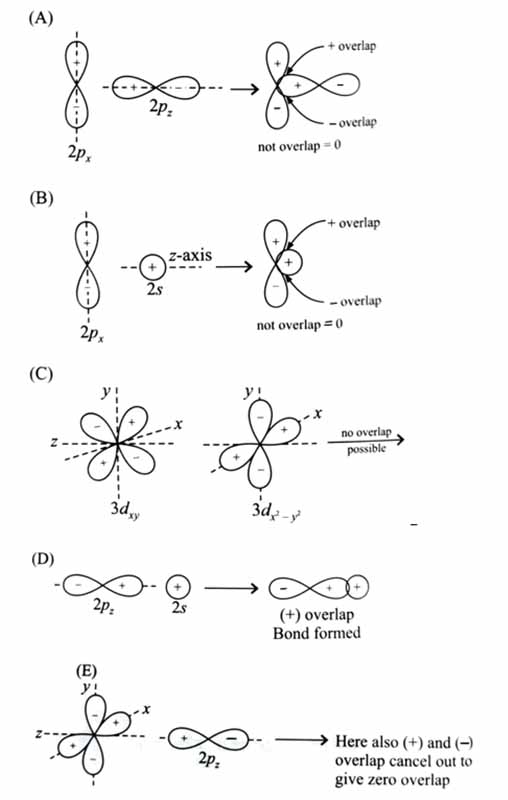Topic Question Set
Q 1
:
Number of molecules/species from the following having one unpaired electron is __________.
[2024]
(2)
| Molecules | Number of electrons | Electronic configuration | Number of unpaired electrons |
| 16 | 2 | ||
| 17 | 1 | ||
| 15 | 1 | ||
| 14 | 0 | ||
| 18 | 0 |
Q 2
:
Number of molecules having bond order 2 from the following molecule is _________ .
[2024]
(2)
| Molecule | Electronic configuration | Bond order |
Q 3
:
The total number of species from the following in which one unpaired electron is present, in ____________ .
[2024]
(4)
| Molecule | Electronic configuration | Number of unpaired electrons |
| 0 | ||
| 2 | ||
| 1 | ||
| 1 | ||
| 0 | ||
| 1 | ||
| 0 | ||
| 1 |
Q 4
:
Total number of electrons present in molecular orbitals of and is _________ . [2024]
(6)
| Molecule | Electronic configuration | Electrons present in |
| 2 | ||
| 1 | ||
| 3 |
Sum = 2 + 1 + 3 = 6
Q 5
:
When and are the wave function of atomic orbitals, then is represented by: [2024]
(4)
Constructive overlap of wavefunctions give bonding molecular orbital ( or ) and destructive overlap of wavefunctions give antibonding molecular orbitals ( or ). Axial overlap of orbitals give (or ) bond and lateral overlap of orbitals give (or ) bond.

Q 6
:
Which of the following linear combination of atomic orbitals will lead to formation of molecular orbitals in homonuclear diatomic molecules [internuclear axis in z-direction]?
(A) and
(B) and
(C) and
(D) and
(E) and
Choose the correct answer from the options given below: [2025]
(A) and (B) only
(E) only
(D) only
(C) and (D) only
(3)

Q 7
:
Which of the following molecules(s) show/s paramagnetic behavior? [2025]
(A)
(B)
(C)
(D)
(E)
Choose the correct answer from the options given below:
(B)
(C)
(D)
(E)
B only
A and C only
A and E only
A and D only
(4)
| Molecule | Electronic Configuration | Number of Unpaired Electrons | Magnetic Nature |
| 2 | Paramagnetic | ||
| 0 | Diamagnetic | ||
| 0 | Diamagnetic | ||
| 2 | Paramagnetic | ||
| 0 | Diamagnetic |

